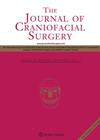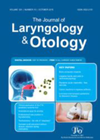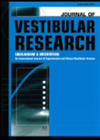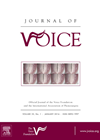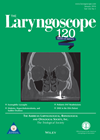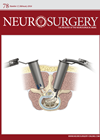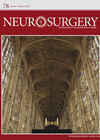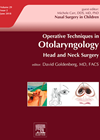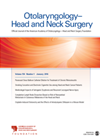
Journal Reviews archive for 2016
Does albumin have an effect on nasal polyposis?
Sometimes a short paper catches your eye! What causes chronic rhinosinusitis? What causes polyps? Fungi? Biofilms? Allergy? Maybe the lack of albumin? The two authors of this short paper present data that may suggest that the lack of albumin can...
Division of tongue tie helps breast feeding
The need for frenotomy in children with tongue tie is not universally accepted. It is however understood that among other problems, such as impaired speech, tongue tie impedes breast feeding possibly leading to early weaning. Therefore, with recent resurgence of...
A comparison of cold dissection, coblation and diode laser tonsillectomy
Excellence in tonsillectomy is based on the time taken, blood loss and rapid recovery with minimal pain. In this study, 120 children underwent tonsillectomy by three methods, namely cold dissection, coblation and diode laser dissection in three randomly allocated groups...
Influence of Helicobacter pylori infection in otitis media with effusion
Otitis media with effusion (OME) affects 20% of children and 10% have a recurrent problem. The incidence of Helicobacter pylori infection in children ranges from 15 to 46%. This study investigates how the presence of Helicobacter pylori infection affects treatment...
How effective is vestibular rehabilitation in bilateral vestibular failure?
In patients with bilateral vestibular hypofunction (BVH), the outcome of vestibular rehabilitation is mixed. The aim of the study was to identify factors associated with outcome of vestibular rehabilitation (VR) in patients with BVH. A retrospective case notes review identified...
International classification of BPPV
In the past few years, the Bárány Society has made great strides in defining and classifying vestibular disorders along the lines of the international classification of diseases. This article addresses the diagnostic criteria for BPPV, the commonest cause of vertigo....
Botulinum toxin injection for bilateral recurrent laryngeal nerve paralysis
All traditional surgical treatments for bilateral recurrent laryngeal nerve (RLN) paralysis are essentially a balance between maximising airway patency and ensuring adequate phonation / airway protection. This paper highlights the potential role of botulinum toxin (Botox) injection into the cricothyroid...
Recovery rates in sudden sensorineural hearing loss
Sudden sensorineural hearing loss (SSNHL) is most commonly idiopathic, and is seen relatively frequently in ENT practice. Recovery spans a period of around 1-2 months, and ultimate outcomes are highly variable, from complete recovery to no detectable hearing. Although the...
Delayed facial palsy post vestibular schwannoma resection
This article presents findings of a retrospective evaluation of 489 patients who underwent vestibular schwannoma surgery and developed delayed facial palsy. The authors define delayed facial palsy as deterioration of at least two HB grades between postoperative days five and...
Pituitary tumour associated headaches
This longitudinal cohort study presents data with significant clinical implications for patients with headaches and the clinicians and surgeons who treat them. For the study, patients completed a self-administered survey on headache characteristics on initial presentation and after surgery of...
Advancing the tongue in OSA surgery
This article further delineates the options for hypopharyngeal OSA and describes the technique of genioglossus advancement to improve the tension in the tongue base. The authors take the reader through the relevant anatomy appropriate to the procedure and describe the...
Hypoglossal stimulation for OSA
Continuous positive airway pressure (CPAP) is a highly effective treatment for moderate-to-severe obstructive sleep apnoea (OSA), but suffers significantly from poor patient adherence. This paper reports the three-year outcomes of a prospective multicentre cohort study examining the effect of hypoglossal...

